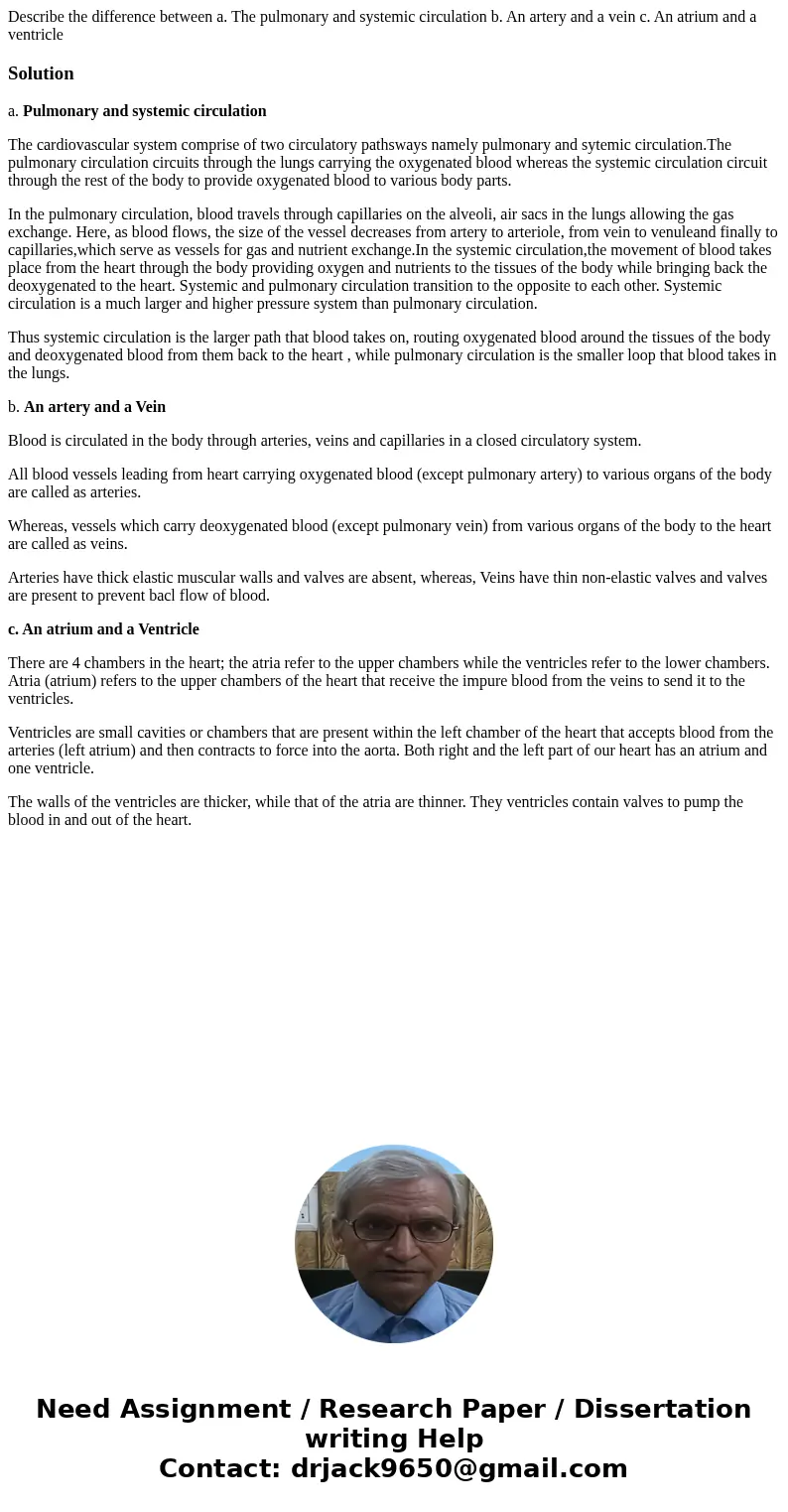Describe the difference between a The pulmonary and systemic
Solution
a. Pulmonary and systemic circulation
The cardiovascular system comprise of two circulatory pathsways namely pulmonary and sytemic circulation.The pulmonary circulation circuits through the lungs carrying the oxygenated blood whereas the systemic circulation circuit through the rest of the body to provide oxygenated blood to various body parts.
In the pulmonary circulation, blood travels through capillaries on the alveoli, air sacs in the lungs allowing the gas exchange. Here, as blood flows, the size of the vessel decreases from artery to arteriole, from vein to venuleand finally to capillaries,which serve as vessels for gas and nutrient exchange.In the systemic circulation,the movement of blood takes place from the heart through the body providing oxygen and nutrients to the tissues of the body while bringing back the deoxygenated to the heart. Systemic and pulmonary circulation transition to the opposite to each other. Systemic circulation is a much larger and higher pressure system than pulmonary circulation.
Thus systemic circulation is the larger path that blood takes on, routing oxygenated blood around the tissues of the body and deoxygenated blood from them back to the heart , while pulmonary circulation is the smaller loop that blood takes in the lungs.
b. An artery and a Vein
Blood is circulated in the body through arteries, veins and capillaries in a closed circulatory system.
All blood vessels leading from heart carrying oxygenated blood (except pulmonary artery) to various organs of the body are called as arteries.
Whereas, vessels which carry deoxygenated blood (except pulmonary vein) from various organs of the body to the heart are called as veins.
Arteries have thick elastic muscular walls and valves are absent, whereas, Veins have thin non-elastic valves and valves are present to prevent bacl flow of blood.
c. An atrium and a Ventricle
There are 4 chambers in the heart; the atria refer to the upper chambers while the ventricles refer to the lower chambers.
Atria (atrium) refers to the upper chambers of the heart that receive the impure blood from the veins to send it to the ventricles.
Ventricles are small cavities or chambers that are present within the left chamber of the heart that accepts blood from the arteries (left atrium) and then contracts to force into the aorta. Both right and the left part of our heart has an atrium and one ventricle.
The walls of the ventricles are thicker, while that of the atria are thinner. They ventricles contain valves to pump the blood in and out of the heart.

 Homework Sourse
Homework Sourse